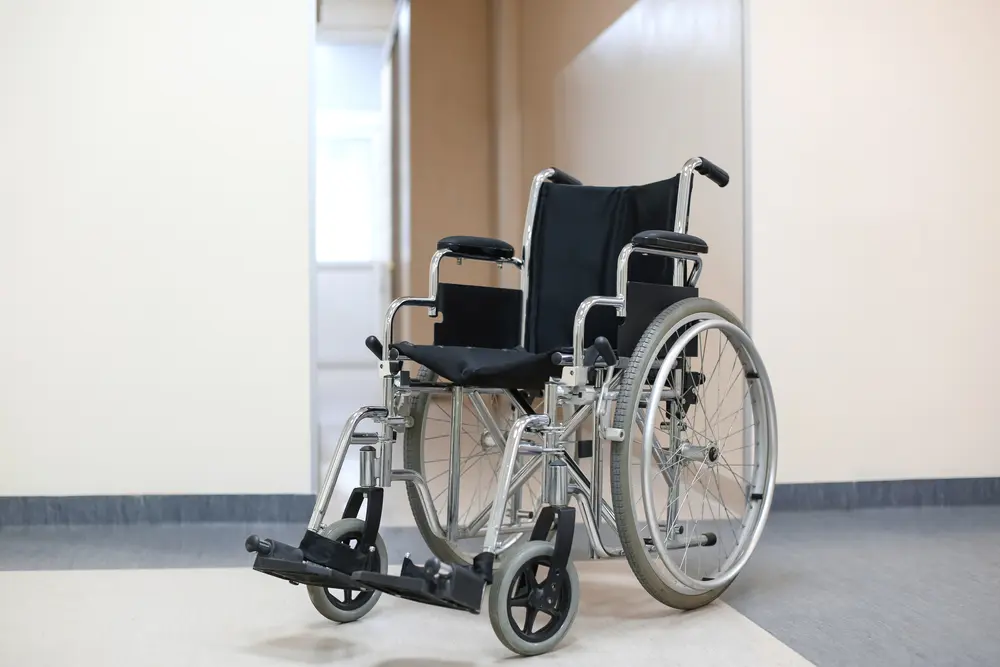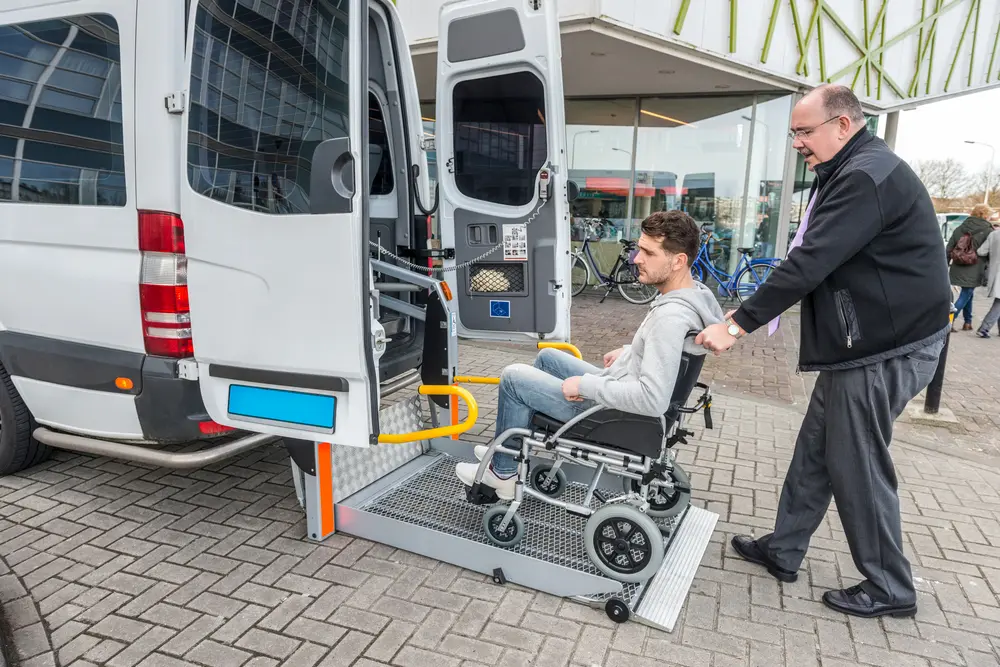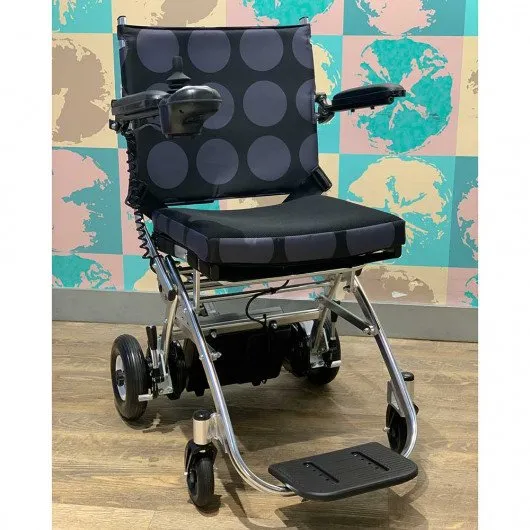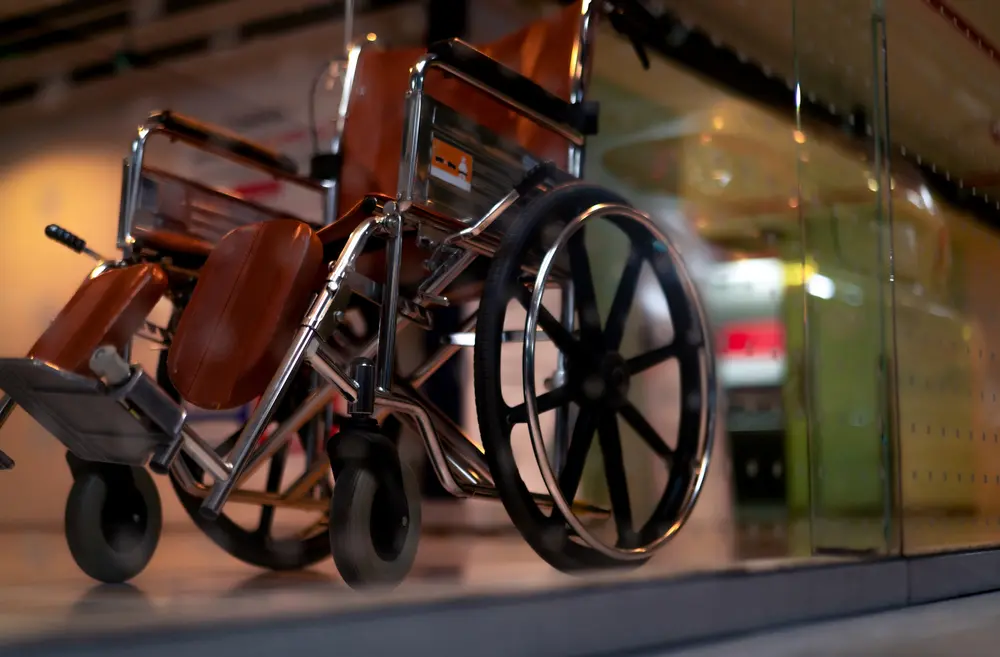People who have impaired mobility may need to rely on mobility devices to do routine work.
And the terms “wheelchair” and “transport chair” are frequently used when considering a mobility device.
Because one in four U.S. adults over 65 now uses some sort of mobility aid, knowing how to differentiate between a wheelchair and a transport chair is essential.
At first glance, they are similar. However, there are several significant differences to remember if you or a loved one are buying it. Selecting a chair that provides sufficient support and features as required is essential.
Our article covers the features, advantages, and considerations of wheelchairs and transport chairs.

Understanding Wheelchairs and Transport Chairs
Mobility devices like wheelchairs and transport chairs help those who cannot walk or have difficulty walking. While they serve a similar job, each has its own unique set of capabilities.
A wheelchair gives its user more mobility and independence because another person or the user pushes it. On the other hand, the transfer chair is compact and lightweight for use over shorter distances.
A video explaining the fundamental difference between a wheelchair and a transport chair
Types of Wheelchairs
Wheelchairs come in several forms to meet the varying requirements of those with mobility impairments. Learning about your wheelchair options might help you select the best version to suit your needs.
Manual standard wheelchairs, electric wheelchairs, and transport chairs are the three most common types of wheelchairs.

Manual Wheelchairs
The most popular kind of wheelchair is the standard chair. Typically, it has a strong frame with two larger wheels that range from 18 to 24 inches tall in the back and two small front wheels.
Manual wheelchairs can be pushed by the user or caregiver using their hands on the rear wheels. These wheelchairs are used indoors and outdoors and come in standard, lightweight, and ultra-lightweight variations for comfort.
Power Wheelchairs
Motorized wheelchairs, often known as power wheelchairs or electric wheelchairs, can be operated by a joystick or other electronic devices.
People with trouble with upper body strength or coordination might greatly benefit from their use. Different types and sizes of powered wheelchairs are available to meet the needs of both the user and caregiver, such as the Jazzy Air 2 Power Wheelchair and FeatherFold+ Power Chair.

Transport Chairs
A transport chair, or a companion chair, is usually used for short-term and travel-based usage.
In contrast to wheelchairs, transport chairs can only self-propel to a limited extent. The rear wheels are too small (almost 8-12 inches) to allow the user to propel the chair forward, and they are often powered and pushed by caregivers.
Short travels, doctor visits, and other activities where the user may not need to propel himself are popular uses of transport chairs.
Lindsay, an occupational therapist, briefly explains a transport chair and its uses.
How are Transport and Wheelchairs Similar?
The fact that transport chairs and standard wheelchairs are similar in some ways just adds to the clutter. Choosing between the two may involve a few questions and some factors that must be clarified.
In the first place, they have a superficial resemblance. Wheelchair-looking transport chairs are also available.
They serve the same purpose. These devices make it easier for people with limited mobility, such as older adults or those with disabilities, to get around.
What Is the Main Difference Between a Wheelchair and a Transport Chair?
Whether you need a manual wheelchair or a transport chair depends on how often you want to use the chair.
Self Propulsion Need
For the nearly 2.5 million Americans who rely on wheelchairs for mobility, the ability to self-propel is essential for gaining more autonomy. The larger rear wheels on most wheelchairs, like the Featherweight Wheelchair, give the user greater freedom of movement without needing caregiver support.
Transport chairs, on the other hand, benefit from smaller wheels for more effortless mobility. A caregiver can even push it, take it up, and put it in the trunk of a car more quickly.
One such product is the Hover Move Lite Folding Power Chair. With a total weight of about 50 pounds, the model’s improved performance on any terrain is partly due to its 12-inch rear wheel setup.
Weight
The weight difference between a wheelchair and a transport chair is another significant difference. A standard wheelchair can weigh anywhere from 32 to 50 pounds, while a transport chair will weigh half as much or even less. Because of their light weight, transport chairs are easier to move around when not in use.
Comfort
As they offer a variety of accessories and features, standard wheelchairs are typically the most comfortable option. Transport chairs are less comfortable than standard wheelchairs because they are specifically designed for short trips and lack cushioning.
Some other key features of most wheelchairs are summarized below,
Transport chairs
- A transport chair is lightweight and usually meant for short-term usage.
- The transport chair utilizes smaller wheels, firmly anchoring them in position.
- Transport chairs require assistance from someone else to propel them.
- The brakes occur only when the user is seated or exiting the chair.
- It is simple to fold and store and fits well in a vehicle’s trunk.
- The structure is slim, allowing it to pass through narrow doors easily.
- It provides limited customization.
Wheelchairs
- People use standard wheelchairs for both long-term and short-term usage.
- They are heavier than transport chairs.
- It has two main wheels and four small wheels.
- It is customizable. You can add numerous features, including cushions, seats, oxygen storage, cup holders, containers, and bags, among many others.
The search for a suitable mobility aid can be easy. Finding the appropriate one for you might provide you with increased mobility and the freedom to do and go anywhere you want.
Incorporating both manual and electric propulsion systems, hybrid wheelchairs such as the Hover Move Lite Folding Power Chair can also allow individuals with disabilities to navigate a variety of terrains with ease while conserving energy.

Conclusion
In conclusion, mobility devices such as wheelchairs and transfer chairs are both helpful in increasing mobility but serve different purposes.
People who want more freedom might benefit from using a wheelchair because of its adaptability, independence, and customization choices. Transport chairs make Short rides and outings more accessible because of their portability, ease of use, and caregiver support.
Individuals may make a well-informed decision that best meets their mobility demands by considering the critical differences between these two choices.
And consulting medical professionals and wheelchair experts is the best resource to tap into for recommendations.

